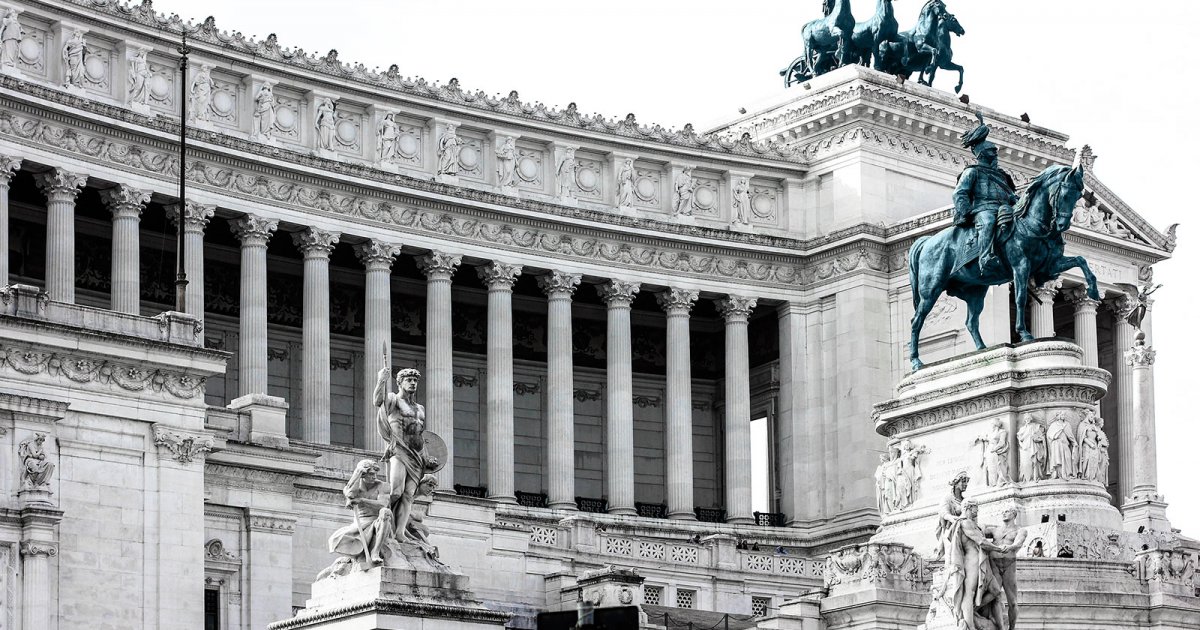VICTORIAN AND ARACOELI, Tour
 Language: English / USA
Language: English / USA
All you have to do is look at it to realize that it's practically impossible to stylistically define the Vittoriano. As a whole, it might remind you of Neoclassical solemnity, but the richness of its sculptural decoration is more similar to the so-called Eclectic or Liberty styles. And you have to consider the fact that the architect Giuseppe Sacconi didn't merely design the structure, but also committed himself body and soul to defining every detail of its decoration.
When it was inaugurated for the Universal Exposition of 1911, after fifty years of national independence, the ornamental sculptures of marble and bronze were still missing. These were mostly added after the First World War until they were complete in 1925, forty years after the start of the works, and fully in the fascist era. It took another ten years to finish the interior. Sarcastically, the Romans immediately baptized it "the typewriter".
Its general form recalls the Hellenistic altar of Pergamo, in Asia Minor: a series of stairs leading to a Hollywood-like colonnade that culminates in a terrace with two bronze carriages.
The statues representing the main cities of Italy form the base of the statue of Victor Emmanuel II on horseback, while the sculptures that you can see above the columns are instead dedicated to the twenty Italian regions. As is clear, the architect's intent was to represent all of Italy in one monument, not only from a symbolic point of view but also from a geographic point of view.
Inside the Vittoriano, today you can visit important exhibitions of ancient and modern art. Some spaces are dedicated to permanent museums about the history of the Risorgimento and important events of the Italian Emigration. If you instead prefer to grab a snack and relax, one of the floors has a nice bar/restaurant where you can enjoy a fantastic view of the city's historic center, which you can also enjoy from the top of the staircase and the terrace.
FUN FACT: when the colossal equestrian statue of Victor Emmanuel II was made, a team of construction workers took part in a very original banquet that they set up inside the bronze horse. It hadn't been since the times of the mythical Trojan Horse that a man hadn't stood above but inside a horse!



